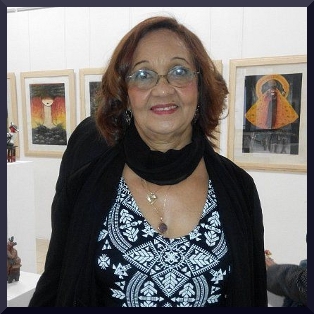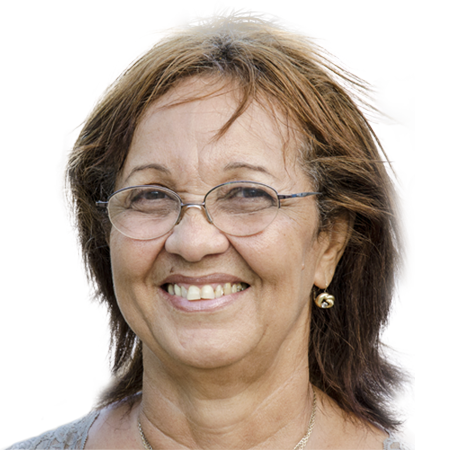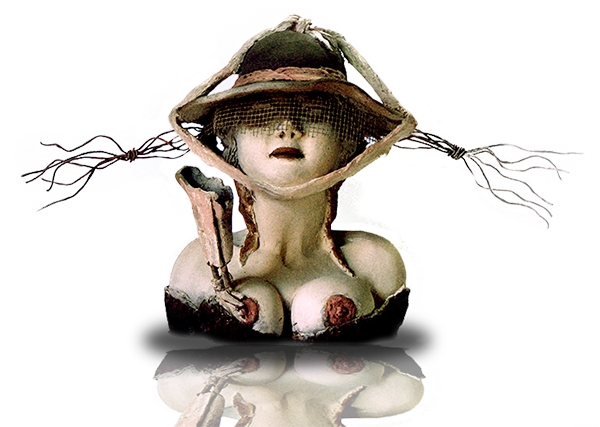

Martha Jimenez: art and originality
Pedro Armando Junco: I am in the presence of a woman I met more than 20 years ago when she was only a housewife in the care of her husband and children. I would like to know, Martha, when that metamorphosis occurs that transforms you into an artist?
Martha Jimenez Perez: I have built my work based on sincerity and persistence. I think that in art it is very important to be sincere and congruent with one's own feelings, only in this way is it possible that the spectators can grasp what is insisted on transmitting. But my greatest virtue has been the weight, because when there is a good path, obstacles appear and you have to know how to overcome them to obtain results.
PAJ: Within the visual arts where you develop your talent, you maintain a range of figurative activities. What are your preferences?
MJP: I really enjoy everything I do. I work painting, the artistic engraving, inside this, the colography, the serigraphy and the dry point, all with their complexities. I also like sculpture a lot and I enjoy it in all formats, but in sculpture of monumental size I have found a peculiar way of specifying my artistic ideas. When I made a model, I am able to achieve a dream, melt an idea, express a pain or fear, win a battle, evoke the spirit of the woman, which is the center of my work, for the place she occupies in society and that is not yet fully recognized. And in this act of creation I get feedback and I find the need to express myself again.
PAJ: Your work is recognized throughout Cuba, and I understand that it has also crossed the national border. Have you been invited to other countries?
MJP: I have had the opportunity to visit many countries, both in personal and collective exhibitions, and in them I have been able to appreciate the reaction of the public and see the acceptance of my work. But I think it's in Cuba where I've had the most success, something I feel very happy about.
PAJ: I know the friend Martha, available for any sketchy whim for a book; the simple Martha that at any time of the day we can find dressed as a worker in her workshop; to the human Martha that sometimes promotes and sponsors children's activities anywhere in the city. Could you tell me why this altruism of your character is due?
MJP: My codes come from my origin to which I always refer. It is the obligatory reference that allows me to always be Martha. I was born in a small town in Holguin, where I trained as an educator and worked with young children, so I feel identified and responsible for the attention that can be given to their training. I believe that humanism and solidarity are saving flags in an increasingly complex world, which is why it must also have a children's project called "Brush with a soul of kiss" that essentially proposes human improvement through art. That is my legacy to the new generations.
PAJ: All your work is good and beautiful. But what has brought you to fame, I think, are your sculptures in the Plaza del Carmen. Anyone who arrives in Camaguey, a foreign tourist or from the country, can not leave satisfied without having visited this place to take a photo at least with one of these life-size statues, representative of the real estate contour of the colonial era of the century. XIX, and why not, centuries before this. Could you explain to me how you got the idea of the water carrier, the gossipers, the couple in love, the man who reads the newspaper?
MJP: This work emerged from my idea of carrying out a project of sculpture of manners. Initially the proposed works were The Gossipers and The Couple in Love (that belongs to the series Lovers under the time). Dr. Roberto Mendez wrote the rationale and suggested that it be located in the Plaza del Carmen. The director of the Office of the Historian, Mr. Jose Rodriguez, gave his approval to the project unconditionally, which in his first step was tendered by CODEMA to finally begin the execution in the year 2001. At the request of the management of the Office of Historian at Camaguey, were included two other sculptures, Matao, a popular character who lived in the community, and the newspaper reader, who obey another of the concepts conceived in the composition of the square: the syncretism and miscegenation of our race. That is why the journalist is Canary-Spanish, Matao is black and the lovers are black and mulatto. The pieces were born in ceramics but with the vision of melting them in bronze, under the precept of preserving them for posterity, which is now a reality for the enjoyment of all visitors and local authorities.
PAJ: What are the future projects of Martha Jimenez?
MJP: It is difficult for me to talk about the future because it is so uncertain, but I can assure you something: work is and always will be my priority.
Author: Pedro Armando Junco
Source: Vina Joven Magazine. Misioneros Claretianos. Parrish Santisima Trinidad. Year 18, No. 57, Page 34.




